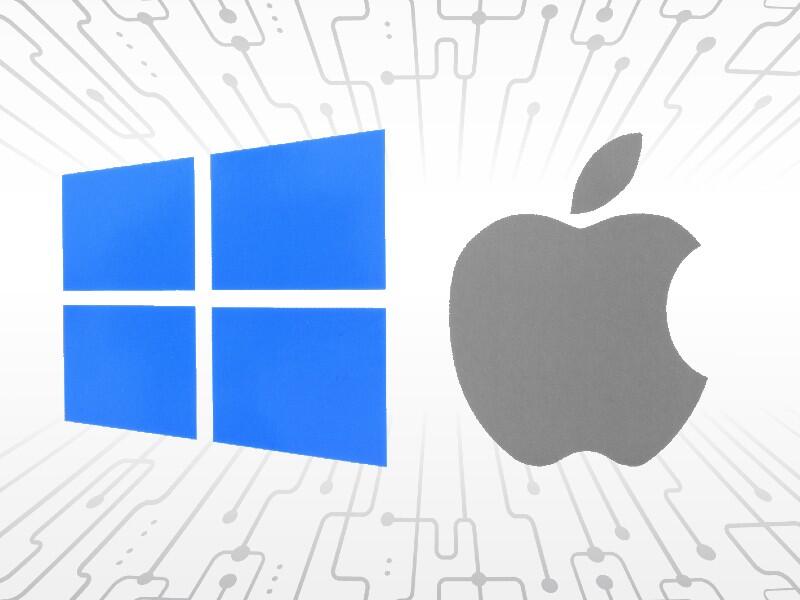All the benefits of Microsoft's low-code platform Power Apps, which help refine workflows, improve reporting and encourage collaboration, are available to Apple users.

Illustration: Lisa Hornung/TechRepublic
Imagine replacing outdated manual data entry processes, including those that drive critical performance reporting, with automated workflows designed using a low-code programming process. It's no dream. Businesses, including Toyota, IKEA and Capitol Records, are turning to Microsoft's Power Apps platform to enable collaboration, share data, lower costs, implement new production and reporting routines, and automate previously cumbersome tasks. Power Apps' features and capabilities are available to Windows users and iPad, iPhone and Mac users.
SEE: The future of work: Tools and strategies for the digital workplace (free PDF) (TechRepublic)
iPad and iPhone users can download and install Microsoft's dedicated and free Power Apps app. Mac users, meanwhile, can load Power Apps within Microsoft's dedicated Teams program for the Mac or access Power Apps via the Safari web browser using their organization's Microsoft 365 platform. Thanks to any of these options, those using Apple hardware can view and edit custom Power Apps others created and shared within their organization, create their own, automate tasks and otherwise access, capture and share business information contained within Power Apps (Figure A).
Figure A

The Microsoft Power Apps iPhone app's Main view provides access to a variety of tools organizations can create and share with authorized users to speed communication, distribute new workflows, better understand data and share reports.
Image: Microsoft
Power Apps helps organizations lower expenses and enhance workflows specifically by permitting them to enable teams to build and launch their own apps using prebuilt templates. Even pre-prepared artificial intelligence components are at the ready with Power Apps. Drag-and-drop simplicity means team members don't need to spend extended periods of time learning coding languages and development nuances. Instead, using Power Apps with iPads, iPhones and Macs, firms can empower staff to quickly create and distribute custom apps that can even be updated on the fly.
Thus, Power Apps' value comes from its ability to permit creating an array of apps that can take advantage of electronic data and integrated and interconnected information collection and reporting platforms to eliminate the need for cumbersome and time-consuming manual processes. Examples Microsoft touts include refining field sales processes, site inspections and traditional sales and marketing workflows.
Users begin by creating an intended user experience on the Power Apps canvas and customizing app details to meet specific needs. Power Apps can collect data and information from everything from cameras and one's location to expense reporting and payroll statistics. Organizations that wish can then leverage investments made in other Microsoft technologies—including Azure and Power BI—to render Power App data in various dashboards and reports and share those elements on public portals, if needed.
Power Apps relies upon Microsoft's Dataverse data backbone that provides a reliable low-code data backend capable of collecting and integrating data via a variety of connectors, or utilities whereby Power Apps and other Microsoft 365 tools share information between sources. Popular connectors include Dynamics AX, SQL Server, SharePoint, Excel and even Oracle databases.
Microsoft has posted step-by-step instructions for creating your first app using Power Apps within Microsoft Teams, the first stage of which is shown in Figure B.
Figure B

Users can load Power Apps directly within Microsoft Teams on a Mac to access workflows, share data and view reports.
Users begin by clicking Create An App, specifying which Team will host the app, providing a name and saving the new app. Next, users select Create a new table from the Power Apps studio's left-hand navigation menu. Tables can collect and store such information as email addresses, telephone numbers, text and URLs, among other elements. Once the app's criteria are defined, users can publish the app using the provided canvas designer. The finished app can also be previewed within the Power Apps studio, where any needed adjustments can be completed, and the final product can be published to Teams. The process offers an almost unlimited number of features and customizations, making Microsoft's published documentation a handy reference with which to begin.

Apple Weekly Newsletter
Whether you want iPhone and Mac tips or the latest enterprise-specific Apple news, we've got you covered. Delivered Tuesdays
Sign up todayAlso see
- How to download and install Microsoft 365 apps on Mac, iPad or iPhone (TechRepublic)
- An inside look at Microsoft's Power Platform Process Advisor (TechRepublic)
- iPhone, iPad and Mac users: How to access the same SharePoint collaboration and communication capabilities as Windows users (TechRepublic)
- Apple users: Get to know these Microsoft 365 solutions to improve collaboration, productivity and more (TechRepublic)
- What Apple users should expect when using Microsoft 365 subscriptions (TechRepublic)
- Microsoft 365 is the long-awaited Microsoft Cloud PC service (TechRepublic)
- More must-read Apple coverage (TechRepublic on Flipboard)





 English (US) ·
English (US) ·